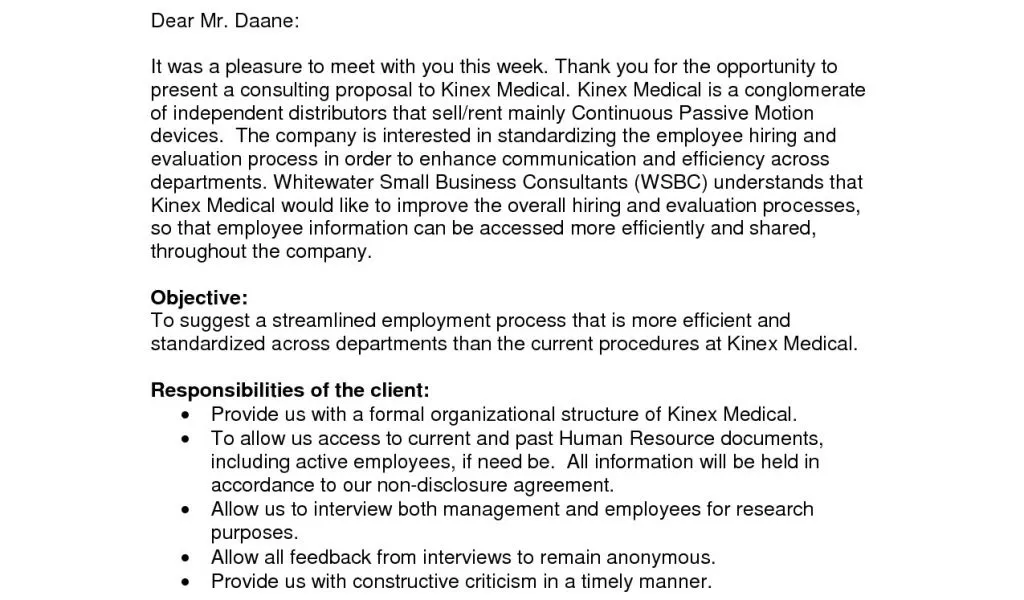What is a Cover Letter?
A cover letter is a crucial document that accompanies your resume when applying for a job. It serves as a personal introduction, allowing you to elaborate on your skills, experiences, and qualifications in a way that a resume alone cannot. Unlike a resume, which presents a factual summary of your work history, a cover letter provides context and demonstrates your personality, enthusiasm, and suitability for the specific role. The best cover letters are tailored to each job application, showcasing your understanding of the company and the position while highlighting how your unique attributes align with their needs. A well-crafted cover letter can significantly increase your chances of landing an interview by making a strong first impression on potential employers.
Purpose of a Cover Letter
The primary purpose of a cover letter is to persuade the hiring manager to read your resume and consider you for an interview. It allows you to explain why you are the ideal candidate for the job and to demonstrate your genuine interest in the company and the specific role. A cover letter enables you to connect your skills and experiences to the job requirements, providing concrete examples of your achievements and how you can contribute to the organization’s success. It also allows you to address any potential gaps or concerns in your resume, such as career changes or periods of unemployment. The cover letter also shows your communication skills, attention to detail, and professionalism, all of which are essential for any successful job applicant.
Key Components of a Cover Letter
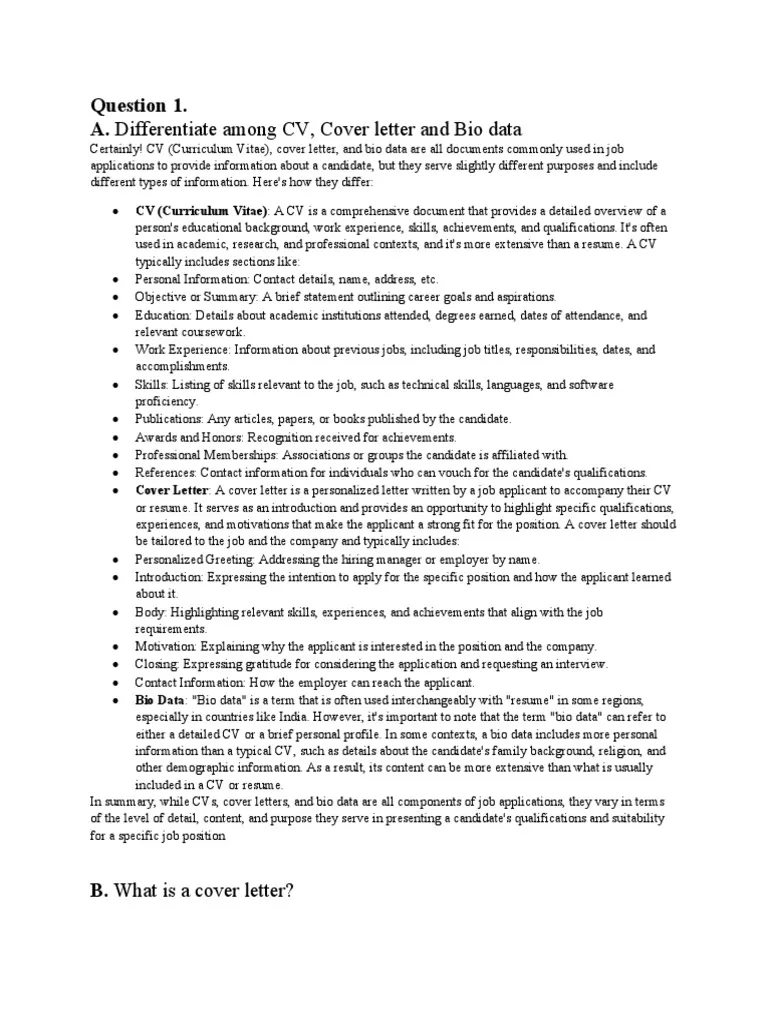
A well-structured cover letter typically includes several key components. These components work together to present a compelling case for your candidacy. Each section serves a specific purpose in conveying your qualifications and interest in the position. They should be concise, clear, and tailored to the job and company. The major components include the header, a personalized greeting, an engaging introduction, body paragraphs highlighting relevant skills and experiences, a closing paragraph with a call to action, and a professional closing with your signature. Each element should be carefully crafted to present a cohesive and persuasive narrative, showcasing your value to the potential employer.
Header of the Cover Letter
The header is the first section of your cover letter and is crucial for establishing your professionalism and providing contact information. It should include your full name, address, phone number, and email address. It’s important to use a professional-looking email address. Following your contact information, include the date and the hiring manager’s name, title, and the company’s address. The header provides the essential information the hiring manager needs to contact you easily, and a well-formatted header immediately signals your attention to detail and organizational skills. Make sure your header is visually appealing and easy to read, as it sets the tone for the rest of your application.
Greeting the Hiring Manager
The greeting is the first opportunity to make a positive impression on the hiring manager. The best practice is to address the letter to a specific person by name. Researching the hiring manager’s name, such as by looking at the company website or LinkedIn, shows your attention to detail and genuine interest in the role. If you are unable to find a specific name, using a professional salutation like “Dear Hiring Manager” is acceptable, but avoid generic greetings. Your goal is to make a personal connection from the start of the letter. Make sure the greeting is appropriate, formal, and reflects the company culture.
Body Paragraphs: Showcasing Your Skills
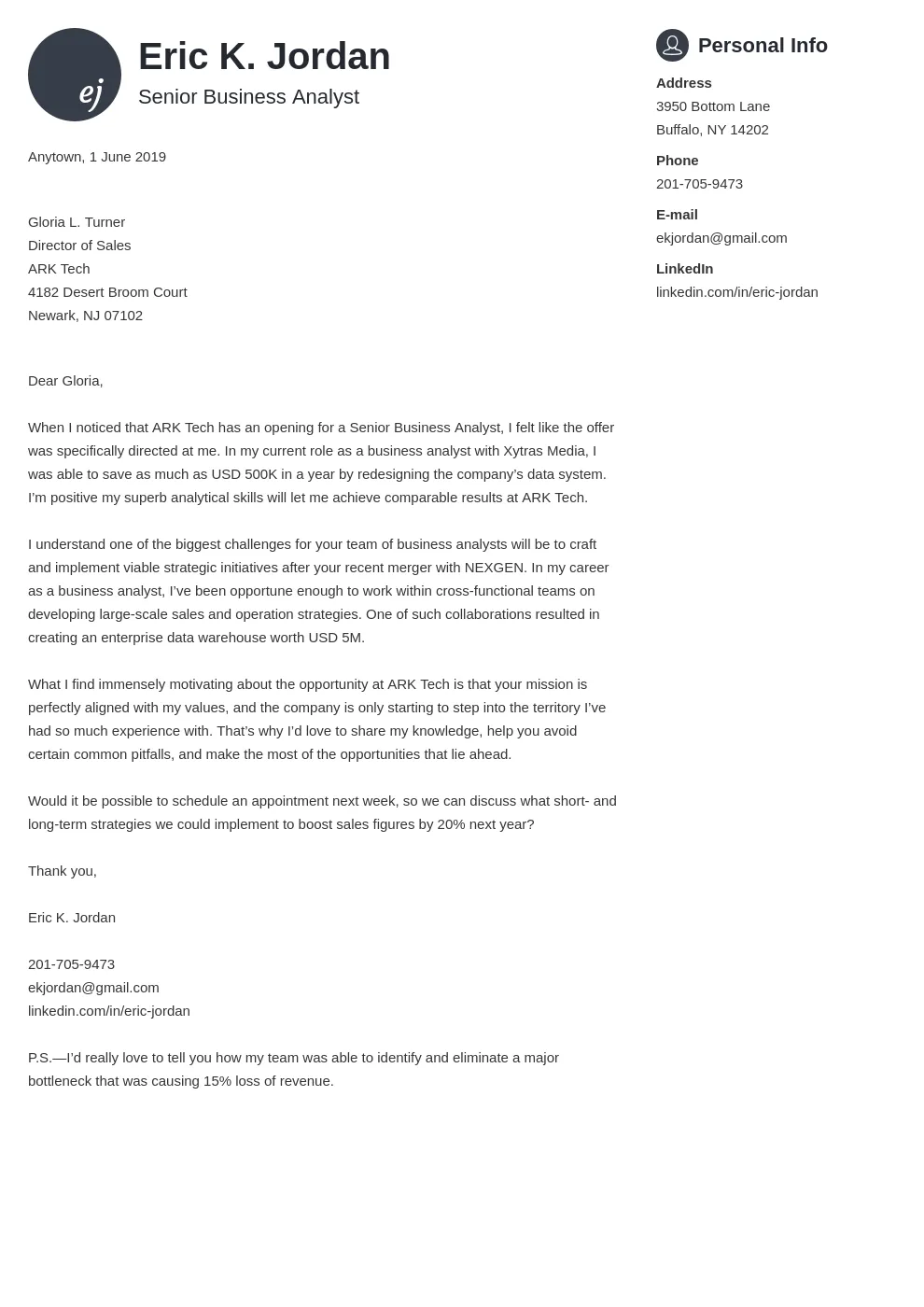
The body of your cover letter is where you present your core skills, experiences, and qualifications in detail. It is crucial to structure this section to be persuasive and tailored to the job description. Start by highlighting the most relevant skills and experiences that match the job requirements. Use specific examples to demonstrate your achievements and quantify your results whenever possible. The goal is to connect your qualifications to the company’s needs and show how you can contribute to their success. Each paragraph should focus on a different aspect of your qualifications. Use clear, concise language and avoid jargon or overly complex sentence structures.
First Paragraph Introduction
The introductory paragraph is the first opportunity to grab the hiring manager’s attention. Begin by stating the position you are applying for and where you found the job listing. Briefly mention what excites you about the role or the company. You can include a concise statement of your most relevant qualification to hook the reader. Keep it brief, enthusiastic, and focused on what makes you a strong candidate. Show that you understand the company’s values and the role requirements. The introduction should set the tone for the rest of the letter, highlighting your enthusiasm and suitability for the position. Avoid generic statements.
Second Paragraph Highlighting Achievements
This paragraph should provide evidence of your skills and achievements. Focus on two or three key accomplishments that directly relate to the job requirements. Use the STAR method (Situation, Task, Action, Result) to structure your examples, providing context, explaining the task, detailing the actions you took, and quantifying the results of your actions. This format makes your achievements clear, concise, and impactful. Quantifiable achievements, such as “increased sales by 15%” or “managed a team of 10,” demonstrate your ability to deliver results. Ensure your examples highlight your strengths and how you can contribute to the company.
Third Paragraph Expressing Interest
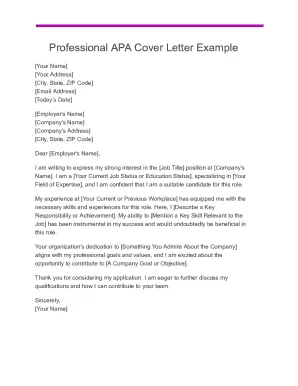
In the final body paragraph, express your interest in the company and the role. Explain why you are a good fit for the company culture and what you hope to achieve in the role. Mention any specific aspects of the company that appeal to you, such as their mission, values, or recent accomplishments. Demonstrate that you have researched the company and understand its objectives. Show how your skills and experiences align with the company’s goals and how you can contribute to their success. Conclude this section by reiterating your enthusiasm for the opportunity and your confidence in your ability to excel.
Closing the Cover Letter
The closing paragraph is your final chance to leave a positive impression. Restate your interest in the position and thank the hiring manager for their time and consideration. Use a call to action, such as inviting them to contact you for an interview. Keep the closing paragraph brief, polite, and professional. Avoid overly casual language or demands. The purpose is to reiterate your enthusiasm, show appreciation, and make it easy for the hiring manager to take the next step.
Formal Closing and Signature
Choose a professional closing such as “Sincerely,” “Best regards,” or “Yours sincerely.” Following the closing, leave space for your signature if you are submitting a hard copy. If submitting electronically, type your full name below the closing. Make sure your name is easy to read. A well-formatted and professional closing reinforces the positive impression you made throughout the letter. This ensures the hiring manager remembers you positively. Pay attention to all the little details.
Proofreading and Editing your Cover Letter
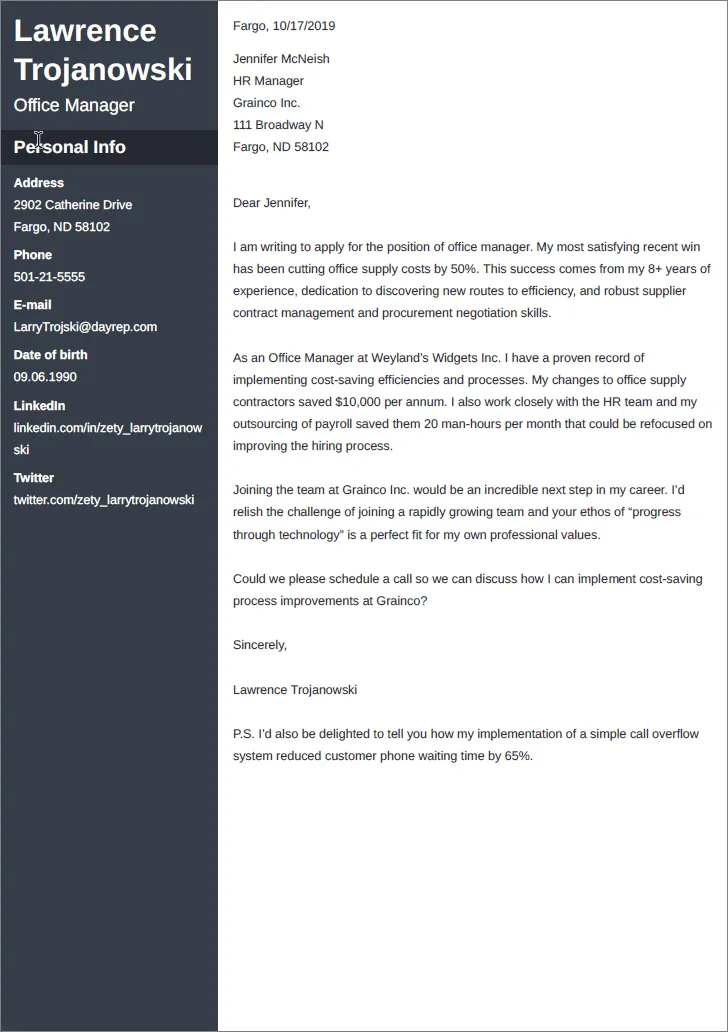
Before sending your cover letter, proofread it carefully for any errors in grammar, spelling, and punctuation. Typos and grammatical mistakes can make a negative impression. Read the letter multiple times and consider having someone else review it. Ensure the tone is professional, the language is clear and concise, and the content is well-organized. Check that your contact information is correct and that the letter is tailored to the specific job and company. Taking the time to proofread and edit ensures that your cover letter is polished and professional, reflecting your attention to detail.
Cover Letter Formatting Best Practices
Proper formatting is crucial for making your cover letter easy to read and visually appealing. Use a clear, professional font, such as Times New Roman, Arial, or Calibri, with a font size between 10 and 12 points. Maintain consistent margins (typically 1 inch on all sides) and single-space the text. Use a clear layout with headings and subheadings to organize the information and break up large blocks of text. Keep the letter concise, aiming for a one-page length. Consistent formatting demonstrates your professionalism and makes your cover letter more reader-friendly. Avoid using excessive formatting elements that could distract from the content.
Font and Font Size
Choose a professional and readable font, such as Times New Roman, Arial, or Calibri. These fonts are widely accepted and easy on the eyes. The font size should be between 10 and 12 points. This size ensures the text is legible without appearing too small or too large. Maintaining a consistent font and size throughout the cover letter is important for a polished and professional look. Avoid using overly ornate or distracting fonts that might make your cover letter harder to read.
Margins and Spacing
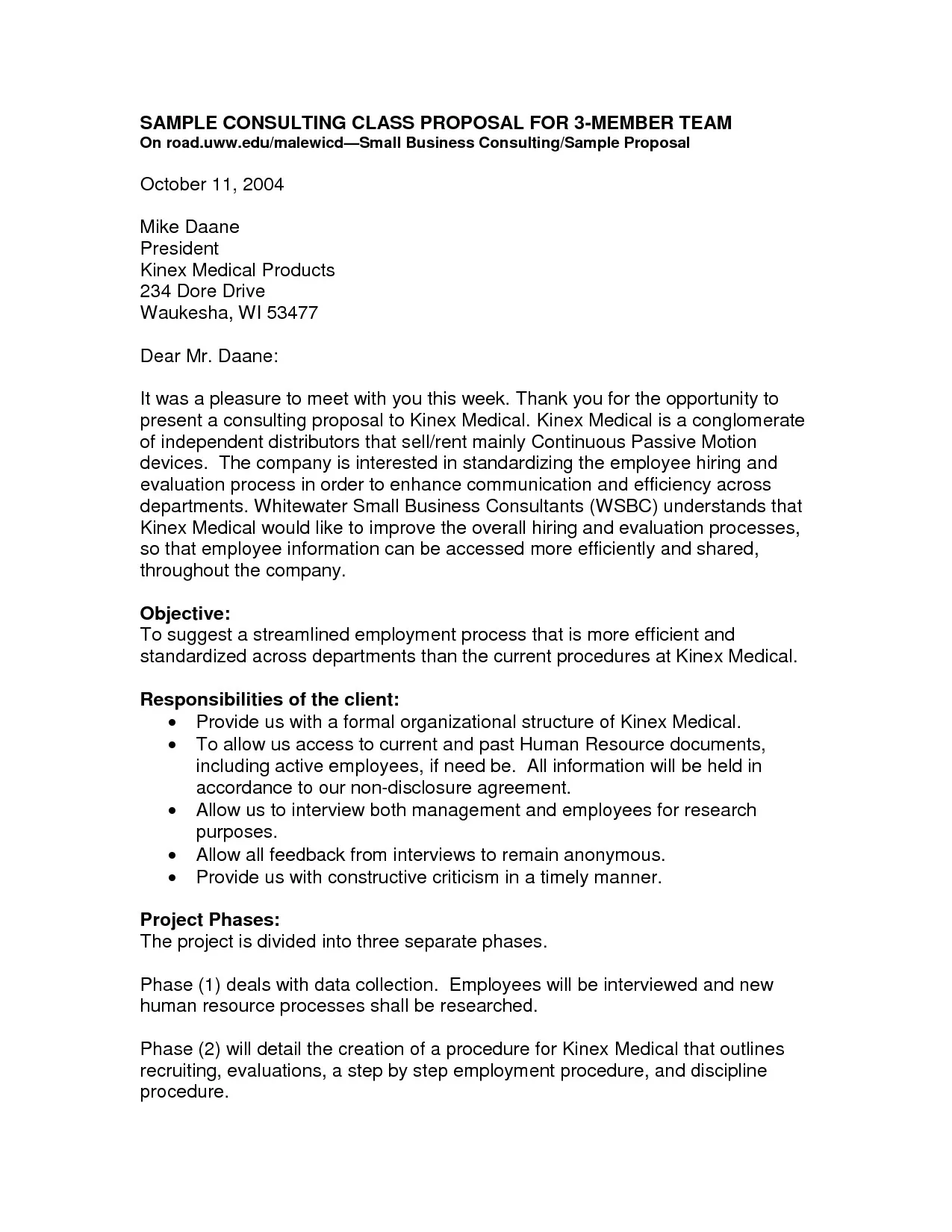
Use consistent margins, typically 1 inch on all sides of the page. This provides a balanced look and prevents the text from appearing cramped. Single-space the text within paragraphs and use a blank line between paragraphs to improve readability. Proper spacing makes the cover letter easier to scan and reduces visual clutter. Consistent margins and spacing enhance the overall presentation and professionalism of your document.
Cover Letter Examples and Templates
Reviewing cover letter examples and templates can provide valuable guidance. Search online for examples specific to your industry or the type of role you are applying for. Many websites offer templates and samples. Use these examples as inspiration but always customize them to fit your skills, experiences, and the job requirements. Avoid simply copying and pasting; instead, tailor the content to showcase your unique value proposition. Tailoring ensures your cover letter feels genuine and relevant, increasing your chances of standing out to hiring managers.
